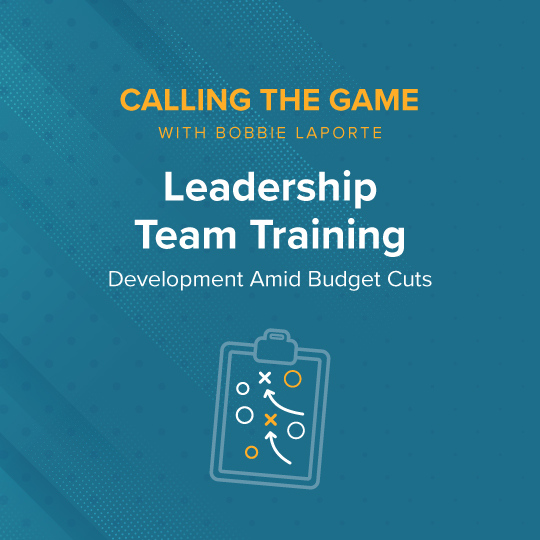Many companies are continuing to cut costs, which means reduced funding for things like professional training and development. But of course, in times like these, investing in your people is more important than ever for employee engagement and retention. So how do you fill the training gap when you have little to no resources to work with? Watch Bobbie LaPorte’s May 7 “Calling the Game” video for some creative—and effective—ideas.
Empowering Tech Leaders to Bridge the Training Gap with Strategic, Cost-Effective Solutions
Hi, this is Bobbie LaPorte, back with another week of “Calling the Game,” where I share my own experience and insights while giving you valuable tools you can use to call your own game…and plan the best moves for you and your team.
I’ve written recently in these posts about how many companies are continuing to trim their operations and cut spending to return to profitability. One of the casualties of cost-cutting that I continue to see is often in professional training and development. This seems particularly unfortunate at a time when investing in people is a key to employee engagement and retention – not to mention helping them build capabilities to grow and succeed in their jobs.
Your Plan to Fill the Team Training and Development Gap
As a leader in this environment, how do you fill the training gap with limited or no formal resources?
There is some creativity and initiative involved, but here is a simple and relatively easy approach to providing some professional development material for your team.
1. Identify the development needs of your team – what seems to be one thing that you most often see them lacking? It could be areas like delegating effectively to their teams; or effectively communicating to senior leaders; or navigating organizational politics. There are many common areas where everyone could use improvement.
Select one that is common for all of your team members and that is also a particular strength of yours. Then, you can draw on your own experience, sharing the story of the obstacles you may have faced and how you built this critical skill. (Note: this can also serve as a very effective example of authenticity and vulnerability with your team). Like…hey, I struggled with this, too.
2. Create a simple curriculum – even just a simple outline of some professional tips, suggestions and resources to share with your team.
For example, let’s consider communicating effectively with senior leaders, a skill we really never master given the dynamic nature of information, individual leaders’ preferences, and the emerging needs of the organization.
There are hundreds of articles, guides, and information pieces on this subject. Pick one that you think will work for your team, add your own tips and lessons learned, and present it as a training session for your team.
3. Keep it simple—highlight 2-3 suggestions on how to build this capability—and then set up opportunities for your team to practice with their peers in a safe environment. Encourage peer feedback and acknowledge good results.
Then, next month, pick another topic. These mini-training modules can have a significant impact on building critical career skills and confidence in your team. It shows that you care about them, and who knows, it may even add to your own skill set.
As a leader, your #1 job is to develop your team. Don’t give up because there is no budget or internal resources.
You are the resource; just get to it.
OK, that’s it for this week’s “Calling the Game.” Hope this helps you gear up for a great week and navigate any curveballs that may come your way!


